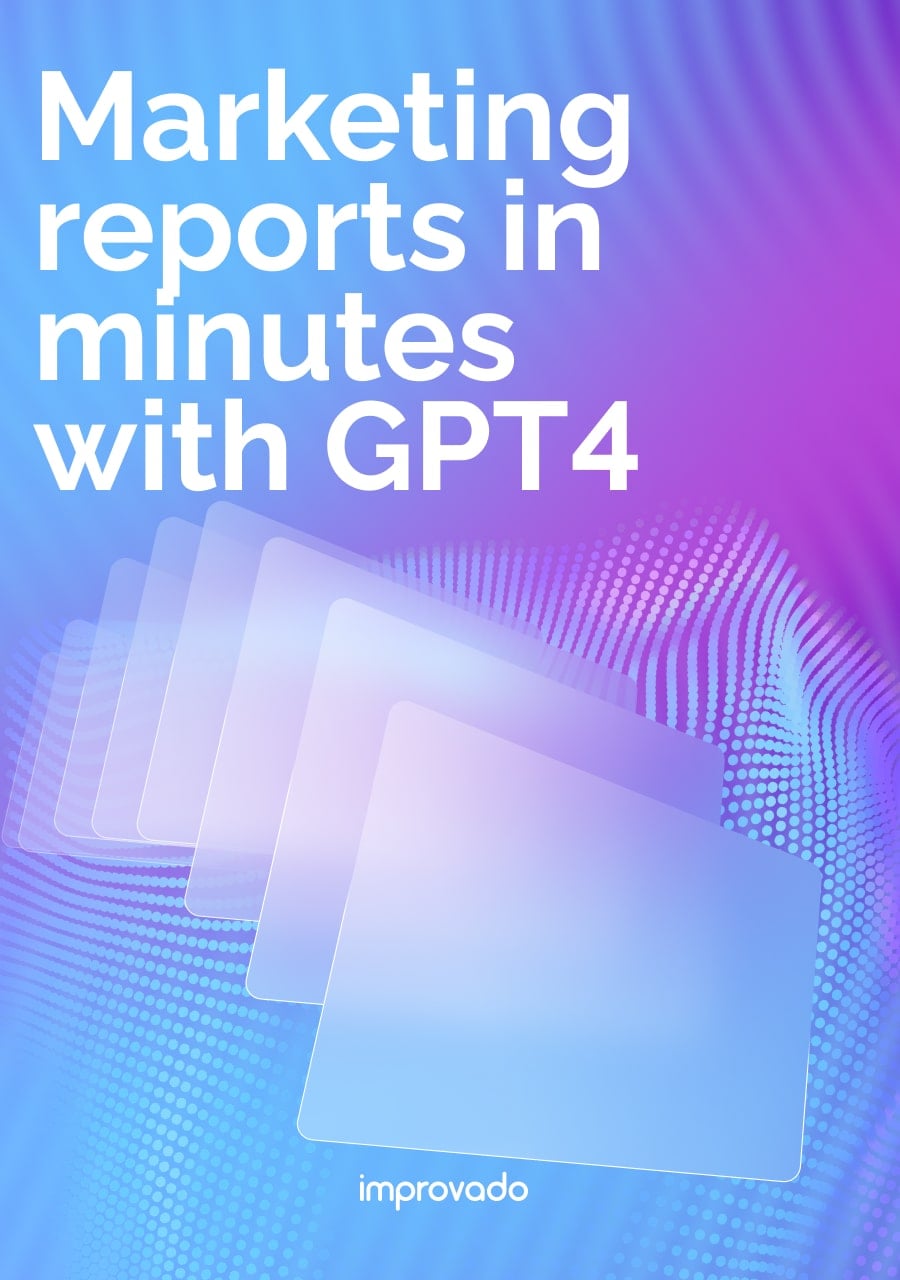You have a great product, a compelling brand story, and a team ready to go. But how do you connect with the right audience and drive meaningful results? The answer lies in a well-executed marketing campaign. Unlike scattered, ad-hoc efforts, a marketing campaign is a strategic, coordinated series of actions designed to achieve a specific business goal over a set period.
This guide will walk you through the essential components of a modern marketing campaign, from initial strategy and planning to the various types you can launch and how to measure their true impact.
Key Takeaways
- Define Your Goal First: Every successful campaign starts with a clear, measurable objective (e.g., increase brand awareness by 20%, generate 500 new leads).
- Know Your Audience: Deeply understanding your target audience's demographics, pain points, and media habits is crucial for effective messaging and channel selection.
- Structure is Key: Follow a structured plan: define goals, identify the audience, craft your message, select channels, create content, launch, and measure.
- Choose the Right Campaign Type: There are many campaign types, from brand awareness and product launches to social media and influencer marketing. Select the type that best aligns with your goals.
- Data is Non-Negotiable: The success of any campaign hinges on your ability to measure performance, analyze results, and optimize in real time. A unified view of your data is essential for proving ROI.
What Is a Marketing Campaign?
While often used interchangeably, a marketing campaign is broader than an advertising campaign. An advertising campaign focuses specifically on paid media placements (like TV ads, social media ads, or search engine ads).
A marketing campaign, however, is an entire strategy that can encompass advertising, public relations, content marketing, email, social media, events, and more, ensuring all marketing efforts are cohesive and impactful.
Key Elements of a Successful Marketing Campaign
A successful marketing campaign is built on a solid foundation. These key elements provide the structure and direction needed to achieve your goals.
Clear Goals and Objectives
Every campaign should start with a defined purpose and measurable outcomes. Establish goals that directly align with business priorities—whether it’s revenue growth, lead volume, product adoption, or customer retention. These objectives should be quantifiable and traceable, forming the baseline for performance evaluation and budget justification.
Target Audience Identification and Segmentation
You can't speak to everyone.
A successful campaign targets a specific audience segment. Develop detailed buyer personas based on demographics, psychographics, pain points, and media consumption habits. This ensures your message resonates and reaches the right people on the right platforms.
Compelling Value Proposition and Messaging
Your core message is what you want your audience to hear, feel, and remember. It should be clear, concise, and aligned with your brand voice. Your overall strategy will outline the key themes, value propositions, and the emotional or logical appeal you'll use to connect with your target market.
Valuable Assets and Content
This includes all the creative materials you'll use in your campaign. Depending on your strategy, this could be blog posts, videos, social media graphics, email copy, landing pages, press releases, or physical advertisements. The content should be high-quality and tailored to each specific channel.
Strategic Channel Selection
Where will you reach your target audience?
Your channel selection should be data-driven. Don't just pick channels because they're popular; choose them because that's where your audience spends their time. This could include social media platforms like TikTok or LinkedIn, search engines, email, or even out-of-home advertising.
Budget and Resource Allocation
Determine a realistic budget for your campaign. This should cover all potential costs, including ad spend, content creation, software tools, and personnel. Allocate resources effectively to ensure each part of the campaign is sufficiently funded to achieve its objective.
Execution Plan and Timeline
An execution plan details the "who, what, and when" of your campaign. Create a clear timeline with key milestones, assign responsibilities to team members, and map out the entire workflow from creation to launch. This project management approach keeps the campaign on track.
Measurement and Analysis
How will you know if your campaign worked?
Define your key performance indicators (KPIs) upfront, based on your goals. This could be website traffic, conversion rates, lead generation, or number of sales.
To effectively measure performance, marketing teams need a unified view of their data across all channels. Improvado gives teams full analytical clarity by centralizing data from over 500 marketing and revenue systems into one standardized structure and powering data-driven analysis.
Once the data is unified, you can push it to BI or build dashboards and run instant analysis with AI Agent. Teams can ask questions in plain language, like which campaigns drove the highest ROAS or where lead quality declined, and receive immediate, context-aware insights.
Real-time dashboards, governed data models, and automated anomaly detection empower marketing, RevOps, and finance teams to evaluate performance instantly and act on insights without waiting for end-of-month reports.
How to Plan a Marketing Campaign: A 7-Step Guide
Following a structured process ensures you cover all your bases and set your campaign up for success.
Step 1: Define Your Purpose and Scope
Start by answering the "why." What is the primary business reason for this campaign? Is it to support a product launch, drive seasonal sales, or build brand equity? Clearly defining your purpose will guide every subsequent decision.
Step 2: Set Clear, Measurable Objectives
Using the SMART framework, translate your purpose into specific goals. This could be generating a certain number of qualified leads, achieving a specific cost per acquisition (CPA), or increasing social media mentions by a set percentage.
Step 3: Define Your Target Audience
Build on your buyer personas. Who are you trying to reach? What are their biggest challenges? What motivates them? The more detailed your understanding of the audience, the more effective your messaging and targeting will be.
Step 4: Develop Your Core Message
Craft a powerful, memorable message that speaks directly to your audience's needs and aligns with your campaign goals. This message should be consistent across all your marketing communications, serving as the central theme of the campaign.
Step 5: Select Your Channels and Create Content
Based on your audience research, choose the most effective marketing channels. Then, develop the specific assets needed for each channel, whether it's ad copy for Google, video scripts for TikTok, or long-form articles for your blog.
Step 6: Launch and Promote Your Campaign
Execute your plan. Roll out your content according to your timeline, monitor initial performance, and be prepared to engage with your audience as the campaign goes live.
Step 7: Measure, Analyze, and Optimize
Continuously track your KPIs against your objectives. Analyze the data to see what's working and what isn't. Be agile and ready to optimize your campaign in real time by reallocating budget to top-performing channels or tweaking your messaging.
For enterprise organizations, optimizing campaigns requires accurate, granular data that is often siloed across dozens of platforms. Automating the data pipeline with a solution like Improvado eliminates 90% of marketing-related IT tickets and gives analysts access to a clean, unified dataset in their preferred BI tool, turning insights into action 5x faster.
17 Types of Marketing Campaigns
Different goals require different types of campaigns. Here are 17 common types to inspire your next marketing strategy.
- Brand Awareness Campaigns: To increase brand visibility and recognition among a broad target audience.
- Product Launch Campaigns: To introduce a new product or service, generate excitement, and drive initial sales.
- Email Marketing Campaigns: To nurture leads, engage existing customers, and promote offers directly to a subscriber list.
- Social Media Marketing Campaigns: To build community, drive engagement, and promote content on platforms like Instagram, Facebook, LinkedIn, or TikTok.
- Search Engine Marketing (SEM) Campaigns: To drive targeted traffic to a website using paid advertisements on search engines like Google and Bing.
- Influencer Marketing Campaigns: To leverage the credibility and reach of influencers to promote a brand or product to their followers.
- User-Generated Content (UGC) Campaigns: To encourage customers to create and share content related to the brand, building authenticity and social proof.
- Sales Promotion Campaigns: To drive short-term sales through discounts, limited-time offers, or special bundles.
- Content Marketing Campaigns: To attract and retain an audience by creating and distributing valuable, relevant content like blog posts, ebooks, or webinars.
- Public Relations (PR) Campaigns: To manage public perception, announce company news, and earn media coverage.
- Video Marketing Campaigns: To engage audiences through compelling visual storytelling on platforms like YouTube, social media, or a company website.
- Seasonal Marketing Campaigns: To capitalize on holidays, seasons, or specific events (e.g., Black Friday, Back-to-School) to drive sales.
- Rebranding Campaigns: To communicate a significant change in a company's identity, mission, or market position.
- Direct Mail Campaigns: To send physical marketing materials like postcards or catalogs to a targeted list of potential customers.
- Guerilla Marketing Campaigns: To use unconventional, creative, and often low-cost tactics to generate buzz and brand awareness in a memorable way.
- Contest Marketing Campaigns: To drive engagement, generate leads, or collect UGC by offering prizes through giveaways or contests.
- Partnership Marketing Campaigns: To collaborate with another brand to cross-promote products or services to a shared audience.
The Role of Marketing Analytics in Campaign Success
Campaign success isn’t determined at launch, it’s measured in the data that follows.
Analytics provide the visibility needed to identify what’s working, what’s not, and where to allocate the next dollar. Without structured, governed data and continuous measurement, even the most creative campaigns operate in the dark.
Improvado supports enterprise marketing teams at every stage of campaign execution. Its Marketing Data Governance ensures data accuracy and compliance before launch through pre-flight checks and automated validation.
During live campaigns, real-time alerts and metric monitoring surface anomalies, pacing issues, and performance shifts the moment they occur.
After execution, Improvado aggregates and harmonizes data from over 500 platforms into a single analytics environment, where its AI Agent enables instant, natural-language analysis.
From setup to post-campaign reporting, Improvado delivers a unified, intelligence-driven foundation for full-funnel performance management. Book a demo to get a unified view of your performance.
.png)
.jpeg)


.png)
